LISE++ energy loss calculation¶
- LISE++ 是计算放射性束流线中次级带电粒子碎片生成、传输的工具包,内部还集成了很多核物理实验和计算中用到的计算程序。
- LISE++ 安装 下载链接 for Windows/linux/Mac OS
- LISE++ 界面
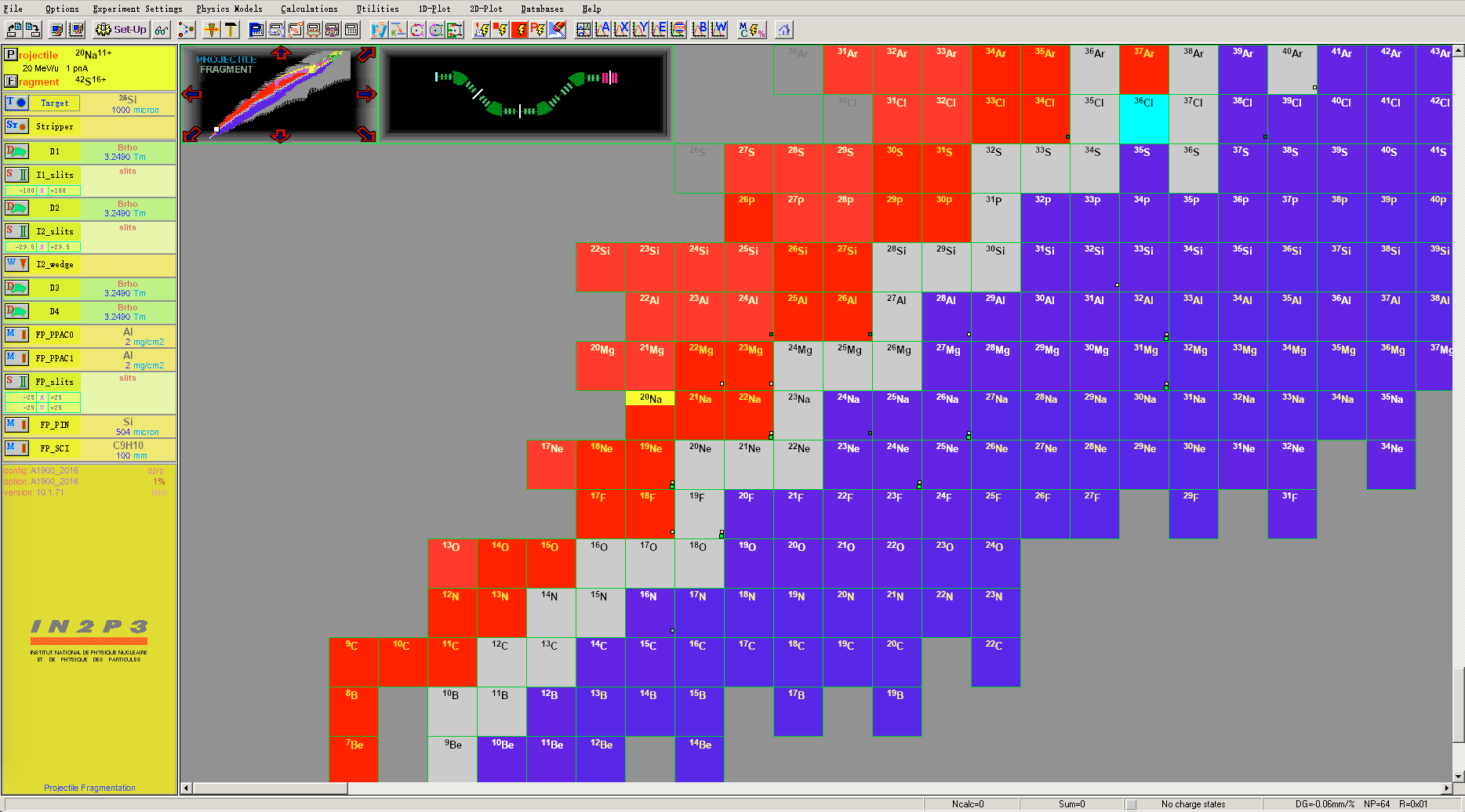
Range/dE/dx¶
- Lise Menu$\to$
Utilities$\to$Plots: Energy loss, Ranges ...
- 选择不同的选项卡可以得到能损曲线和射程曲线
- $\to$
Stopping power(dE/dx) ...dE/dx ~ e - $\to$
Range in material ...Range ~ e
- $\to$

获得dE/dx~E 数据步骤:¶
从菜单栏中进入
Stopping power(dE/dx) ...选项卡设定注入粒子(Projectile)和靶材料(Material),单位选择micron(um).
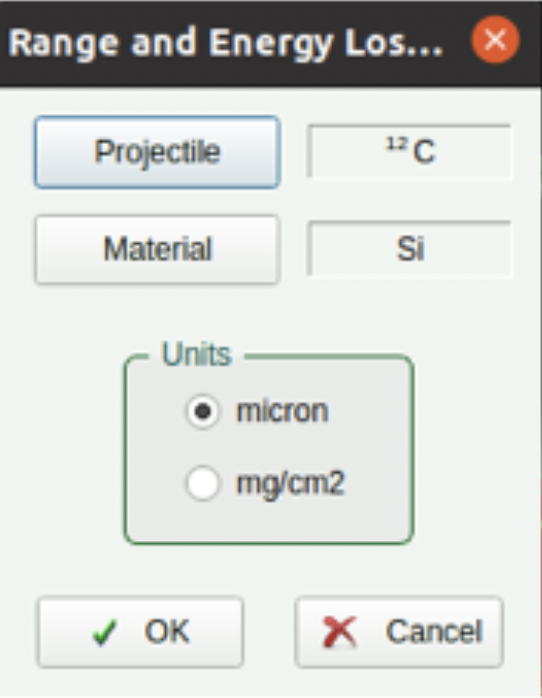
靶材料选择界面:
靶为单质
- 选择同位素和状态(气态,固态)
靶为化合物或混合物
- 按照比例依次添加不同同位素
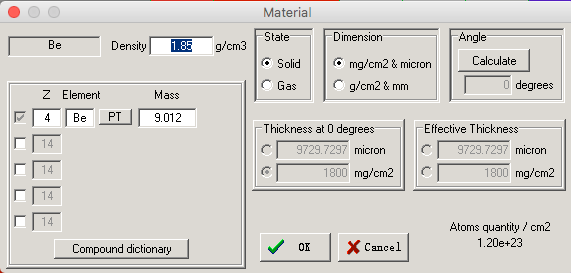
- 选择给定化合物或混合物
- 上图中选择左下方Compound dictionary.
- 将材料按照分类列在不同的种类中。
- 选择下拉栏中合适材料,比如water liquid。
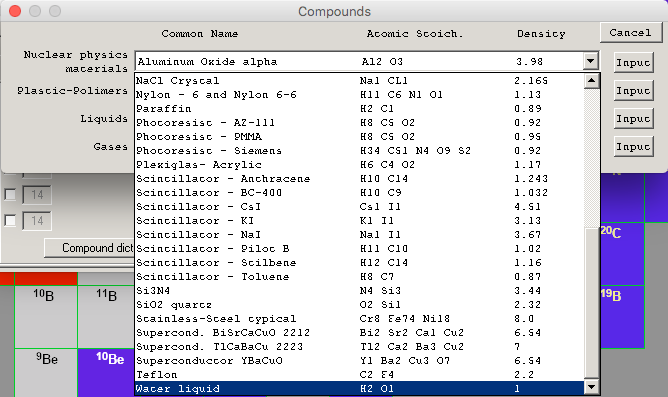
- 点击右侧Input按钮,导入靶材料。
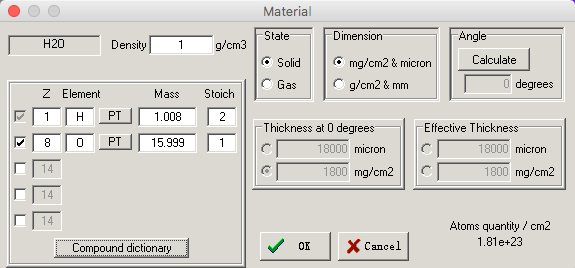
点击 OK 即可获得能损曲线。在我们感兴趣的能量范围 1e-2 - 1e4 MeV/u,几条模型给出的曲线(下图中1-4)结果基本一致。
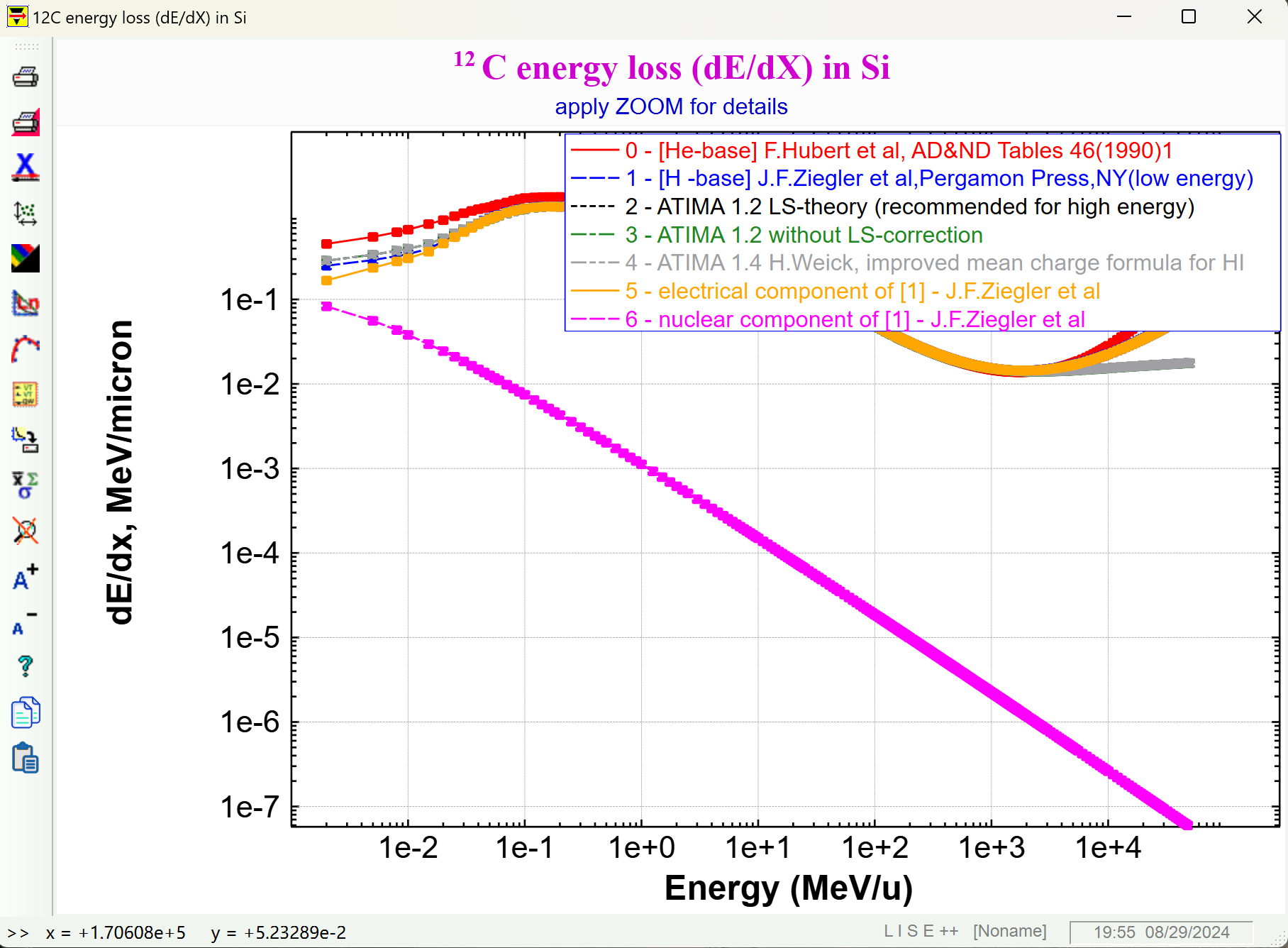
- 按左侧边栏图标可以改变图形显示方式,点击
Save As图标保存数据文件。
- 最终获得数据文件如下:示例数据文件
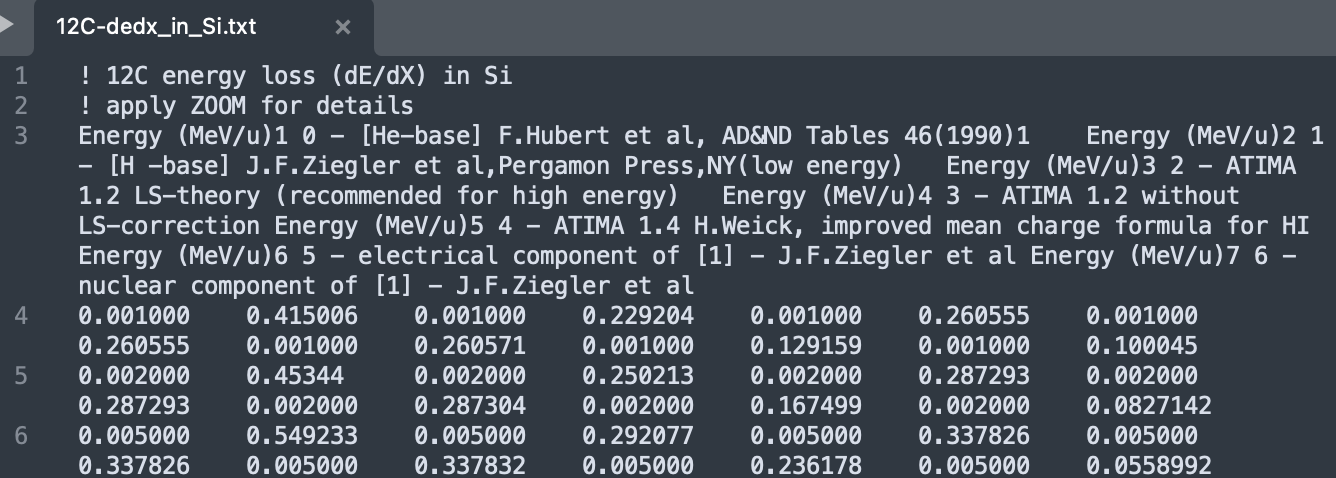
获得Range~E 数据步骤:¶
选择
Range in material ... ...选项卡重复上述步骤
// 0 - [He-base] F.Hubert et al, AD&ND Tables 46(1990)1
// 1 - [H -base] J.F.Ziegler et al,Pergamon Press,NY(low energy)
// 2 - ATIMA 1.2 LS-theory (recommended for high energy)
// 3 - ATIMA 1.2 without LS-correction
// 4 - ATIMA 1.4 H.Weick, improved mean charge formula for HI ----
// 5 - Range straggling - method [0] - LISE
// 6 - Range straggling - method [1] - Atima
// 7 - Lateral range - method [0] - LISE
// 8 - Lateral range - method [1] - Atima
// 9 - Lateral range - method [2] - PDG
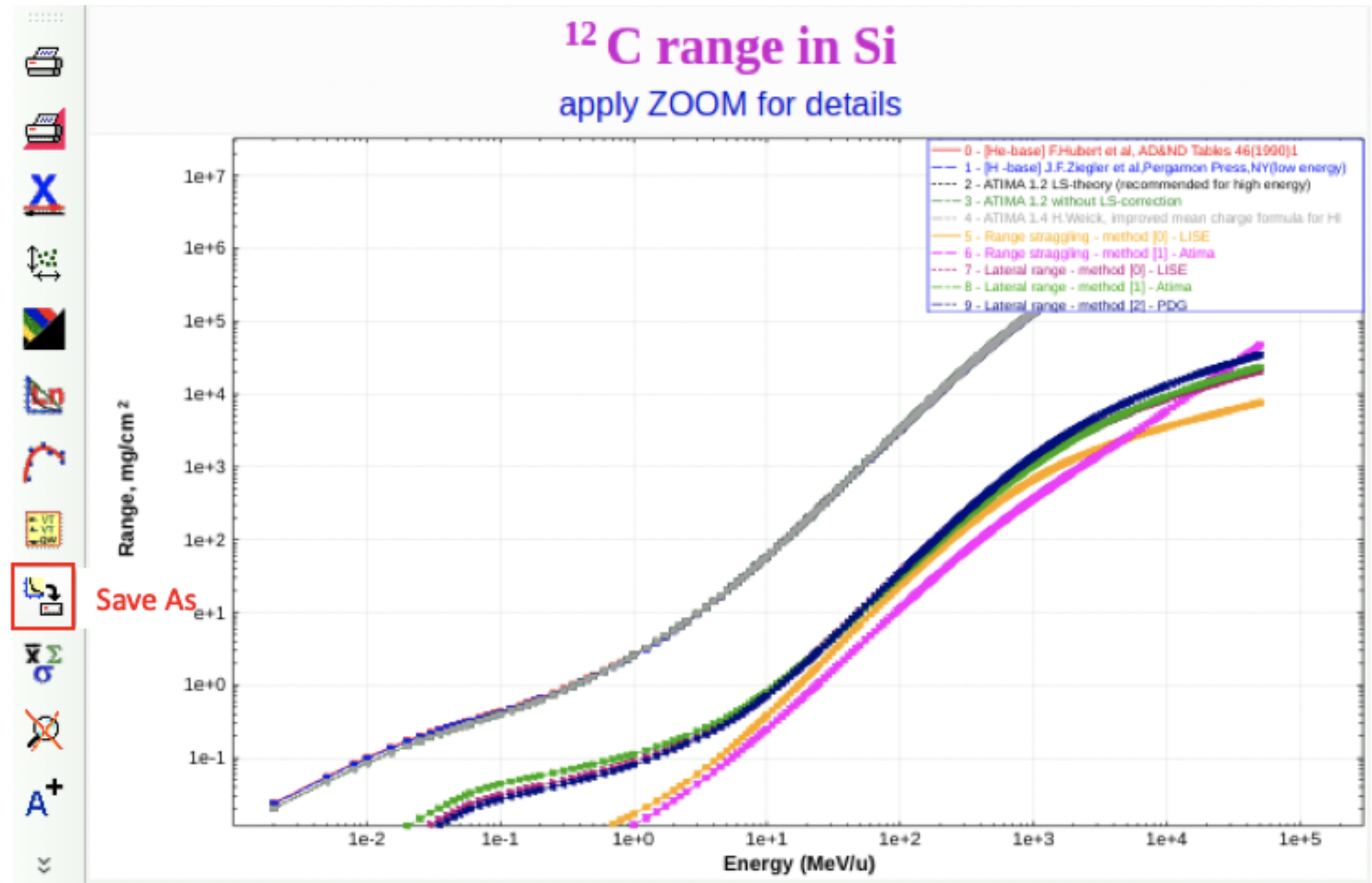
- 最终获得数据文件如下:示例数据文件

